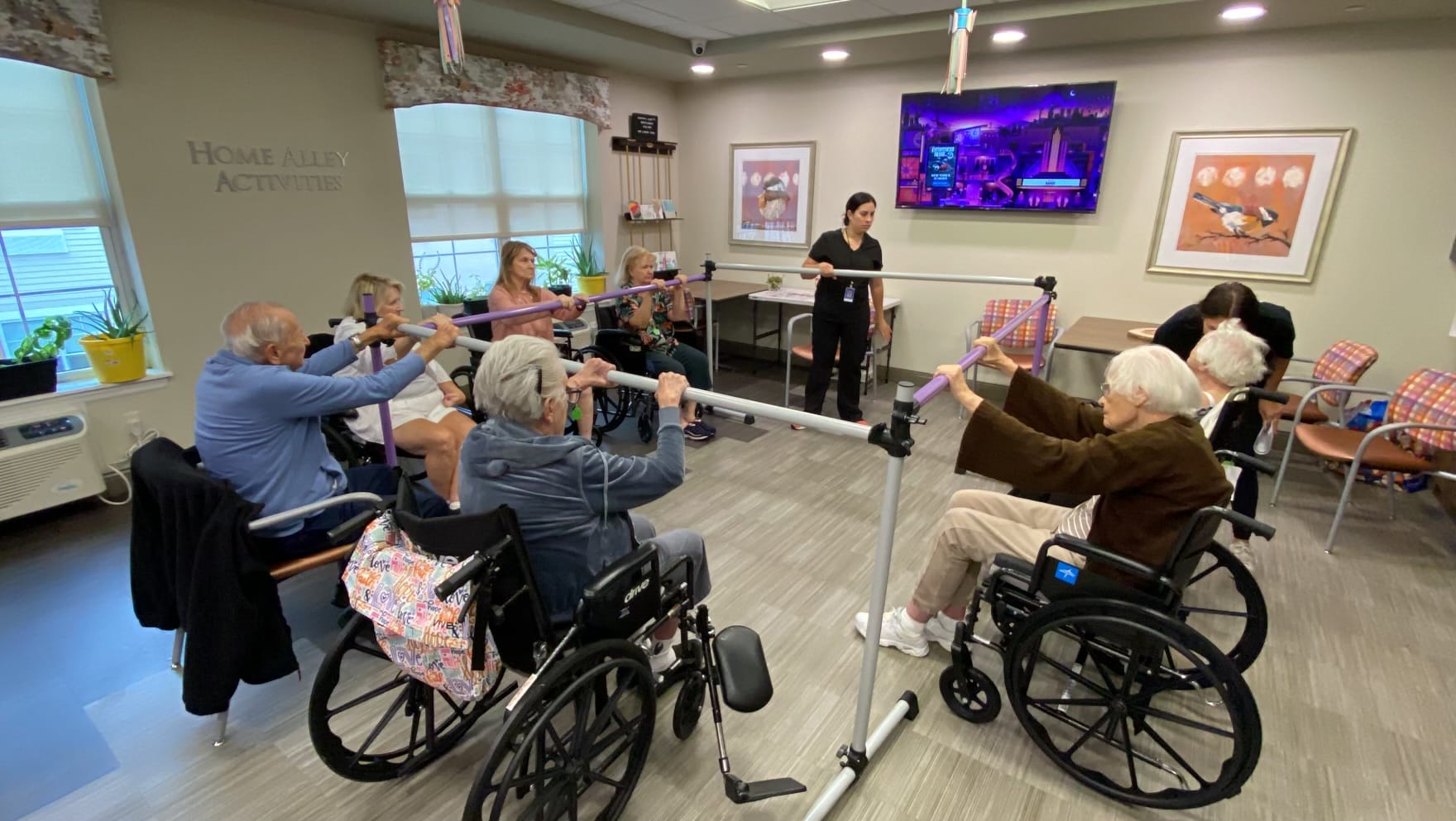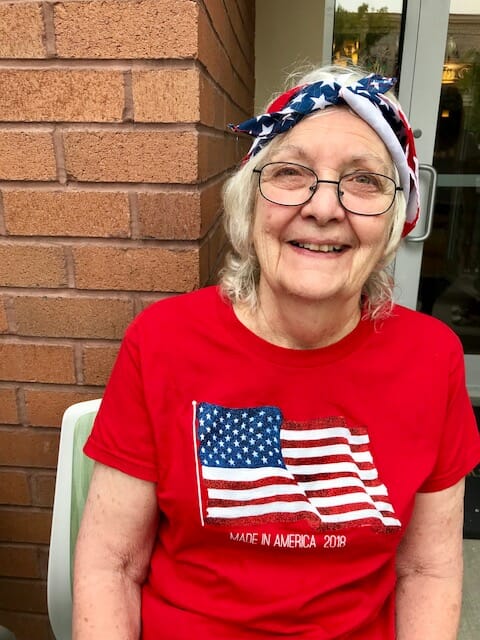After a serious injury or chronic condition occurs, doctors often prescribe various care programs — such as acute or subacute rehabilitation programs — for healing. But what is sub acute rehab and acute care?
We get it: understanding each type of care — let alone choosing the right level of care — can be challenging. Especially when you’re trying to heal, making that decision is that much harder.
Although many hospital members can help lay out options for acute and sub-acute rehabilitation programs, you know what’s best for you.
When it comes to making your decision, you’re not alone. We’re here to help.
Village Walk here. Our team of medical and assisted living professionals has more than 30 years of experience caring for seniors who live with chronic and acute physical and memory-related conditions.
We’re here to help you make your decision a little bit easier.
In this article, we’ll describe the differences between these sub-acute and acute care. We’ll also discuss the role skilled nursing facilities and assisted living communities play in the process.
Let’s dive in!
Defining acute rehabilitation services
Acute rehabilitation aims to deliver high-intensity, caring, in-patient therapy. With acute rehab, patients regain basic functionality and independence with daily life.
In most cases, acute care involves three or more hours a day of therapy, five to seven days a week. Most therapy sessions include a combination of physical, occupational, and speech-therapy-related treatments.
Many elderly patients living with physical ailments and memory-related issues — such Lewy body dementia — receive medical management with acute care.
Many times, acute care treatments involve several health professionals. Let’s take for example a senior who’s taken a fall. This senior may receive physical therapy and rehabilitation from physical therapists, physiatrists, and occupational therapists.
With acute care, medical professionals work together to help a patient recover and move forward.
Acute care is for people who’ve experienced, for example, the following conditions:
- Brain injuries
- Amputations
- Heart attacks
- Debilitating pneumonia
- Chronic obstructive pulmonary disease
- Intensive orthopedic surgeries
- Strokes
- Spinal cord injuries
- A failed out-patient treatments
For patients who can’t withstand the intensity of acute care, sub-acute programs can help.
Defining sub-acute rehabilitation services
Sub-acute rehabilitation tends to provide less vigorous therapy schedules. This type of rehabilitation helps patients who are transitioning from an acute rehabilitation facility or who can’t tolerate the intensity of the schedules for acute care.
Some subacute care patients opt to stay with an enhanced assisted living facility as part of their healing process. At Village Walk, we accommodate these patients.
At our facility, patients have access to:
- A team of on-site medical professionals who are available 24/7
- Physiotherapists, occupational therapists, speech therapists, and on-site psychologists
- Professional medical support
- Help with activities of daily living, such as bathing, dressing, grooming, medication management, and much more
With subacute rehab, patients receive therapy for about one to two hours each day. Subacute care is for:
- Patients who need less intensive therapy than that of acute rehabilitation
- Patients who need a little more therapy to regain full control over their lives.
Conditions that might warrant subacute care include:
- Spinal cord injuries
- Terminal illnesses
- Long-lasting issues related to strokes
- Neuromuscular conditions
If subacute care sounds all-encompassing, it is! It’s meant to help patients return to daily life with as high a level of strength, comfort, and functionality.
You’re invited!
Did you know we teach a community college class in the local Patchogue, NY, community? Contact us today, or check out our Facebook events page to learn more!
Table: The difference between acute and subacute rehab
| Acute rehabilitation | Subacute rehabilitation | |
| Summary | Acute therapy lasts three or more hours and involves almost daily therapy sessions. | Subacute therapy is for people who need long-term care to help maintain a quality of life. Therapy lasts about one to two hours per day. It’s for patients who need a less intense version of acute therapy. |
| Length of sessions | 3 or more hours of therapy per day | 1-2 hours of therapy a day |
| Type of therapy | A combination of physical, occupational, speech, psychological, and physiotherapy with a multidisciplinary team | A combination of physical, occupational, speech, psychological, and physiotherapy with a multidisciplinary team |
| Applicable medical conditions | Serious medical issues warranting short-term intervention, such as: 1. Brain injuries 2. Amputations 3. Heart attacks 4. Debilitating pneumonia 5. Chronic obstructive pulmonary disease 6. Intensive orthopedic surgeries 7. Strokes 8. Spinal cord injuries 9. Failed out-patient treatments 10. And more | Medical issues that involve long-term care, such as: 1. Dementia 2. Spinal cord injuries 3. Terminal illnesses 4. Persistent health Conditions related to strokes 5. Neuromuscular conditions 6. And more |
Recover strength and vitality at Village Walk’s assisted living facility
To recap, acute care is an intensive form of rehabilitation for people who’ve completed a hospital stay but need more help with their condition. Subacute care is for people who can use a less intensive form of acute therapy — or have already completed acute therapy — to regain full functionality.
When it comes to recovery, we understand how important making the best decision possible for your loved one and your family can be. If you or a loved one have experienced a serious illness or injury, why not give us a call?
Our senior living concierge staff are here to help you make the best possible decisions for the journey ahead. Our “Meet Me Where I Am” program is based on understanding your needs and adapting to the moment.
We join individuals in their current reality and help them chart the course of their condition with clear, compassionate, and personalized health programs that enhance quality of life.
To learn more about what our Village can do for you, don’t hesitate to reach out to one of our knowledgeable and caring senior concierge staff. We’d be happy to see you through the healing process ahead.
Frequently asked questions about acute and subacute care
What’s the difference between hospital, acute, and subacute care?
The difference between an inpatient/outpatient hospital stay, acute rehabilitation, and subacute care lies in the intensity and frequency of care. With a short-term hospital stay and acute rehab, patients engage in a vigorous and intense therapy schedule.
In contrast, subacute rehab tends to be for patients who are moving from an acute rehab facility or hospital to a skilled nursing home facility, memory care facility, assisted living facility, or their home. Subacute care patients may be getting better or need less intense rehab services.
Who qualifies for subacute care?
Patients who qualify for sub-acute rehab and care may have experienced the following:
- A traumatic injury
- Their health status is improving
- They can use help with day-to-day activities
- They aren’t able to tolerate the frequency and intensity of acute rehab therapy
- They may have already completed an acute rehabilitation program
What are the benefits of choosing an assisted living facility for subacute care?
As hospitals continue to surge with new patients, the market for post-acute care will grow in years to come, according to research. As a result, choosing an assisted living facility for sub-acute care can offer you and your loved ones responsive, community-driven, and personalized healthcare.
When choosing an assisted living facility versus an in-home care program, assisted living facilities can provide you with:
- On-site occupational therapy, respiratory therapy, speech therapy, and physical therapy
- Top-quality medical care, healthcare, and wellness programming
- A caring and resourceful team that will coordinate most health services for you
- Living environments with the highest level of security, safety, and serenity
You can take a look at some of the amenities and services we provide to understand what we offer our residents.
“Quick assistance… kept us informed along the way.”
Mom moved in after several falls at home requiring a stint in rehab and at the start of the pandemic. She missed living with us at home but the staff did all they could to engage her.
From Christian asking her to join her neighbors on outings, to Christine and the rec staff involving her in the activities, they took the time to learn her likes and dislikes. If a medical issue arose, they were quick to give or get her assistance, keeping us informed along the way.
If I had any concerns, I could easily reach staff and department heads like Crystal to discuss them and work out an action plan. As Mom reached the end of her life, the care, concern and compassion shown by the staff touched our hearts and confirmed we made the right decision.” – Kenneth K., grateful Village Walk family member.








